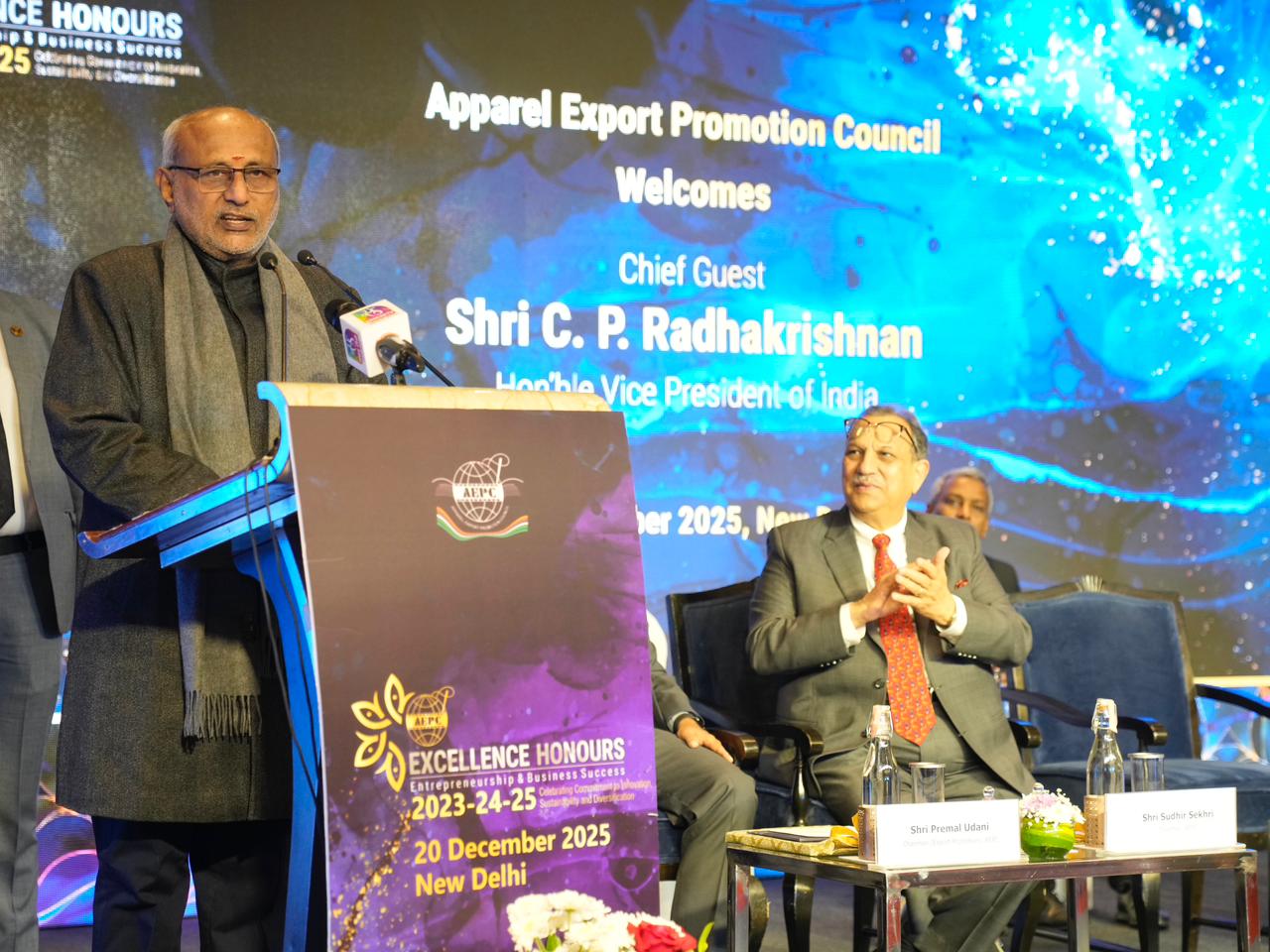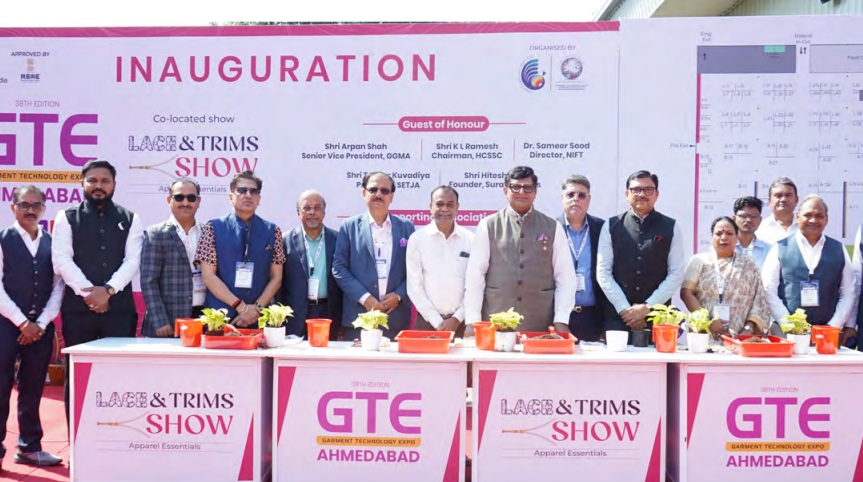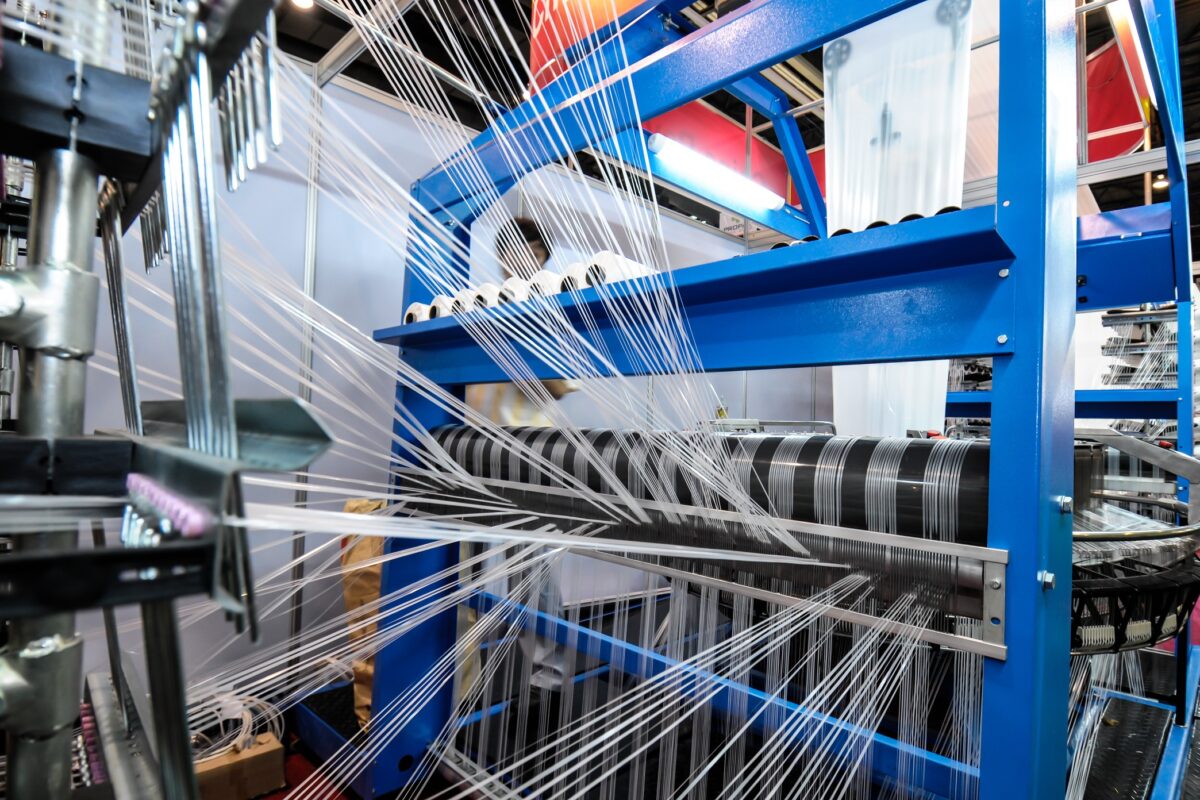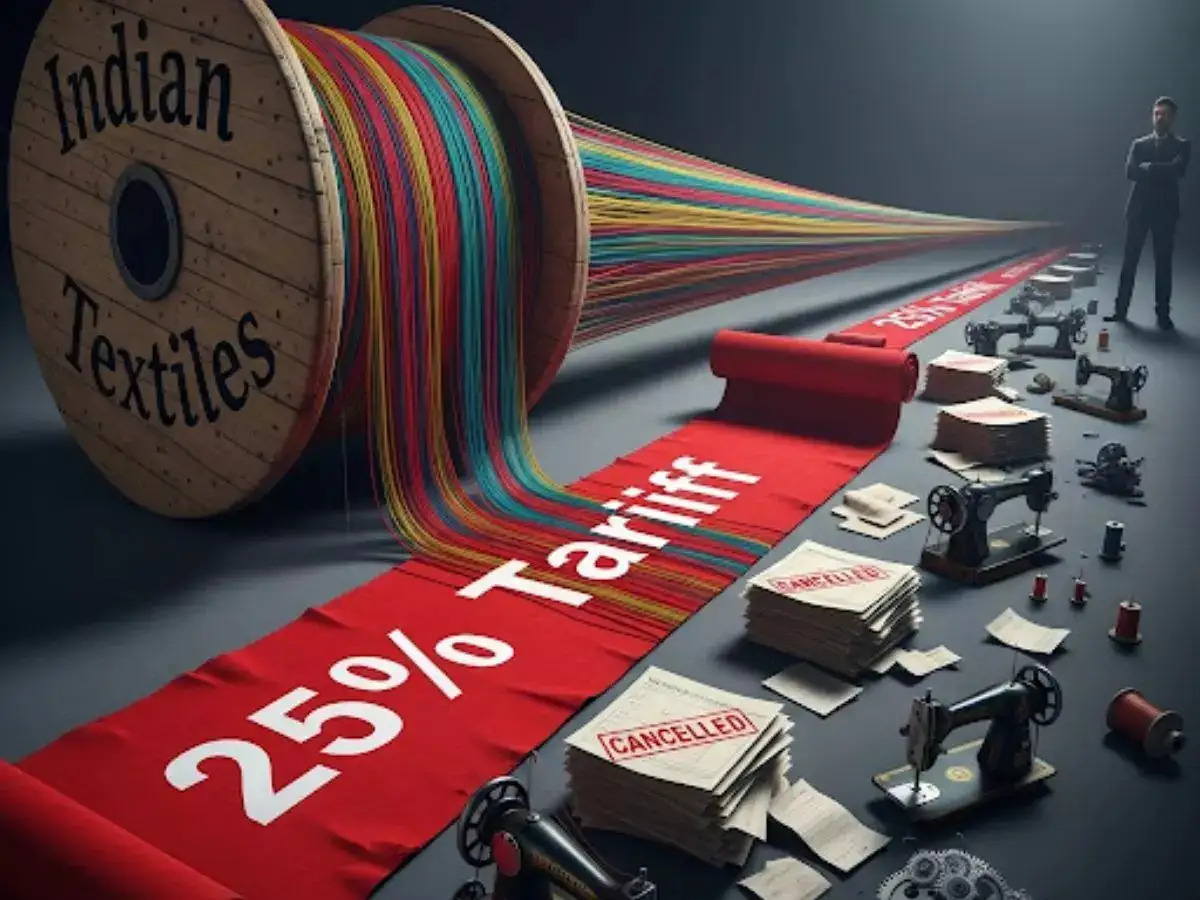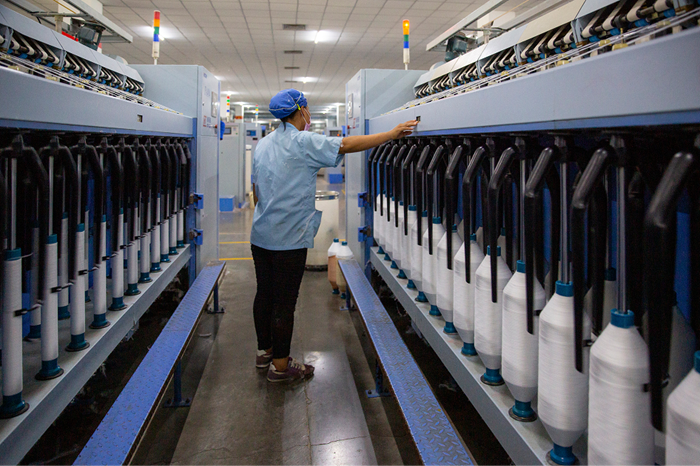FW
Knitwear Capital of India,’ Tiruppur, is witnessing a historic reversal of fortunes this December. Once the primary engine of India's apparel exports, the cluster has seen Rs 15,000 crore ($1.8 billion) in confirmed orders vanish since the US imposed a punitive 50 per cent tariff on Indian textiles in August 2025. MK Stalin, Chief Minister, Tamil Nadu has termed the situation a ‘looming humanitarian challenge,’ as daily revenue losses across the state's textile belt hit Rs 600 million. With US buyers demanding 25 per cent price haircuts to offset the levies, domestic manufacturers are facing a ‘margin collapse’ that has already forced production cuts of up to 30 per cent.
Shift to alternative hubs
The crisis is rapidly reshaping global sourcing maps. While India remains locked in a trade stalemate with Washington, competitors like Vietnam, Bangladesh, and Cambodia - facing significantly lower tariffs of 19 per cent to 20 per cent - are aggressively capturing Tiruppur's lost market share. ‘Once supply chains move, they rarely revert,’ Stalin warned in a high-stakes letter to Prime Minister Modi, emphasizing that the state’s 7.5 million textile workers are now at risk of mass layoffs. To counter this, New Delhi has accelerated its ‘FTA blitz,’ signing a landmark deal with Oman this week and finalizing the India-UK CETA to offer duty-free access for Indian garments elsewhere.
Tiruppur Exporters Association is the premier trade body representing the Rs 45,000 crore cotton knitwear cluster in Tiruppur, which accounts for 90 per cent of India’s cotton hosiery exports. Its single largest buyers includes the US which accounts for 35 per cent of its total exports, followed by the EU and the UK.
India’s textile and apparel sector has voiced a strong opposition against a recommendation by the Directorate General of Trade Remedies (DGTR) to impose steep Anti-Dumping Duties (ADD) on Mono Ethylene Glycol (MEG). Ranging from $103 to $137 per metric tons, these proposed duties have sparked a Pan-India protest involving over 15 major trade associations. Industry leaders warn that this move could dismantle the fragile progress made by recent GST reforms, which reduced taxes on Man-made Fiber (MMF) to 5 per cent. By effectively raising MEG costs by an estimated 20 per cent, the levy threatens to create a ‘chokehold’ on the downstream value chain, erasing the affordability gains intended to make Indian textiles globally competitive.
Domino effect on employment and MSME Viability
The collective of trade bodies, including the Northern India Textile Mills' Association (NITMA) and the Confederation of Indian Textile Industry (CITI), warned of severe socio-economic fallout if the Finance Ministry approves the DGTR’s findings. An estimated 40,000 MSMEs are at immediate risk of closure, potentially stalling Rs 20,000–Rs 30,000 crore in planned expansions. Furthermore, the duty jeopardizes approximately 3 lakh potential jobs linked to the Production Linked Incentive (PLI) scheme. By worsening the ‘Inverted Duty Structure,’ the proposed levy makes Indian exports significantly more expensive, handing a competitive advantage to global rivals in the $350 billion international textile market.
Lever Style Corporation is doubling down on its inorganic growth strategy to counteract a deteriorating global trade environment. By acquiring key assets from the Australia-based Active Apparel Group (AAG) in December 2025, the Hong Kong-listed group has secured its seventh major transaction since 2019.
This $13 million asset purchase comes at a critical juncture; with US apparel import tariffs hitting a multi-decade high of 26.4 per cent in mid-2025 and a potential tariff-induced recession looming for 2026, Lever Style is aggressively pivoting toward the resilient activewear sector. ‘Bad times are the best times to buy,’ notes Stanley Szeto. Executive Chairman, signaling a move to utilize the industry downturn to capture market share from credit-strained competitors.
High-performance portfolios and the Sun Day Red synergy
The acquisition specifically targets the activewear market, which remains the industry’s primary growth engine with a projected global value of $431.12 billion in 2025. AAG brings 38 years of technical expertise and a premium client roster including Greyson, Johnnie-O, and Tiger Woods’ high-profile Sun Day Red brand. This portfolio complements Lever Style’s existing partnerships with performance giants like Arc’teryx and Skims.
By integrating AAG’s technical sophistication, Lever Style enhances its operating leverage, allowing it to offer cross-selling opportunities across its ‘asset-light’ modular platform. This strategy is essential for navigating a market where US demand for Chinese imports has plummeted by nearly 38 per cent, forcing a rapid shift to the group’s multi-country network in Vietnam, India, and Cambodia.
Lever Style Corporation is a leading global production platform for the premium contemporary and performance apparel sectors. The company operates a unique modularized supply chain that supports over 150 brands through a network of more than 100 partner factories across seven countries.
Unlike traditional manufacturers, Lever Style utilizes an asset-light model that focuses on design, technical development, and logistics rather than factory ownership. This allows the group to remain highly agile, moving production between regions to mitigate geopolitical risks and tariff spikes.
Circulose and Birla Cellulose signed a partnership agreement on December 18, 2025 to intergrate Circulose’s 100 per cent recycled textile pulp into Birla’s massive industrial footprint- the company currently holds a 15.7 per cent global volume share in man-made cellulosic fibers (MMCF).
This collaboration is strategically timed to meet the massive demand spike triggered by the European Union's 2025 updates to the Waste Framework Directive. New Extended Producer Responsibility (EPR) mandates now require brands to finance the management of the 5.2 million tons of textile waste generated annually in the EU. For global retailers, the Birla-Circulose pipeline offers a crucial compliance solution. The company’s partnership with Birla is a cornerstone of their strategy to enable mainstream adoption, states Jonatan Janmark, CEO, Circulose. The alliance effectively de-risks the supply chain for brands by providing a ‘ready-to-weave’ recycled fiber that matches the quality of virgin viscose.
Commercializing the $44 billion next-gen pipeline
While textile-to-textile recycling was once hindered by high capital costs and fragmented collection, the industry is entering a hyper-growth phase. Analysts project the global textile-to-textile recycling market will surge from $4.8 billion in 2025 to a staggering $44.8 billion by 2034. As a case in point, Birla’s consistent ‘Dark Green Shirt’ rating in the 2025 Canopy Hot Button Report underscores the trust global brands place in this supply chain. This partnership solves the ‘scaling gap’ by ensuring that recycled pulp is immediately converted into high-performance staple fiber, allowing fashion houses to meet their 2030 recycled-content targets without compromising on texture or durability.
The pulp and fiber arm of the Aditya Birla Group, Birla Cellulose is a global leader in sustainable Man-Made Cellulosic Fibers (MMCF). Operating 11 manufacturing sites and five advanced R&D centers, the company specializes in viscose, lyocell, and modal fibers. Birla has achieved the highest sustainability ranking in the Canopy Hot Button Report for six consecutive years, driven by its commitment to net-zero carbon emissions by 2040 and a 50% reduction in water intensity by 2025.

The Indian rupee’s historic slide past the ₹90.43 per dollar mark in late 2025 has forced a fundamental recalibration across India’s $179 billion textile value chain. While a "weak" rupee is often celebrated as a windfall for exporters, the reality is a complex "double-edged thread." For an industry that employs 45 million people, the currency's depreciation is acting as both a catalyst for global price competitiveness and a crushing weight on the cost of essential imported inputs. As global supply chains shift, the question for Indian manufacturers has evolved from whether the falling rupee is a "pain" to how quickly they can transform this volatility into a strategic "opportunity."
The Imported Inflation Squeeze: From fiber to chemicals
The immediate impact of the rupee’s descent is visible in the rising cost of production. India remains significantly dependent on imports for high-end synthetic raw materials and specialty chemicals. For instance, the Man-Made Fiber (MMF) segment—a key focus for future growth—relies on imported Mono Ethylene Glycol (MEG) to supplement domestic deficits. With the dollar strengthening, the cost of these inputs has surged by nearly 6–8% in just the last quarter.
Beyond raw fibers, the "hidden" cost of the falling rupee lies in processing. India imports approximately 70–80% of its high-end specialty dyes and functional chemicals used for performance wear and fast-fashion finishes. Every cent the rupee loses adds directly to the processing bill. When manufacturers combine expensive dollar-denominated chemicals with the 25% spike in domestic logistics costs, the currency-led export advantage starts to evaporate before the garment even leaves the factory.
The machinery gap and the cost of modernization
A critical bottleneck in India’s quest to rival China and Vietnam is the reliance on imported technology. To meet the global demand for high-speed, automated production, Indian mills import advanced shuttleless looms, knitting machines, and digital printing equipment primarily from Germany, Italy, and Japan. As the rupee tests the ₹91 level, the capital expenditure (CAPEX) for modernization has bloated. A machine that cost ₹1 crore in early 2024 now requires an additional ₹8–10 lakh due to currency fluctuations alone. This "modernization tax" is particularly heavy on MSMEs who are trying to scale up under the government's Production Linked Incentive (PLI) scheme but find their dollar-denominated machinery loans increasingly difficult to service.
Supply Chain Impact: The "Fibre-to-Finished" cost matrix
The following table illustrates how the rupee's depreciation filters through different stages of the textile supply chain as of late 2025:
|
Supply Chain Stage |
Key Imported Input |
Impact of Rupee at ₹90+ |
Sector Sentiment |
|
Fiber & Yarn |
MEG, Specialty PSF |
High Pain: Input costs up 7% |
Negative/Neutral |
|
Processing |
Dyes, Silicone Oils, Finishers |
Medium Pain: 10% rise in chemical bills |
Neutral |
|
Manufacturing |
CNC Looms, Automated Stitching |
High Pain: CAPEX costs up 12% |
Stressed |
|
Finished Apparel |
Global Brand Licensing/Tech |
Opportunity: 5-6% better export pricing |
Optimistic |
Export resilience in a protectionist era
Despite the input cost hurdles, the "opportunity tomorrow" is beginning to manifest in export volumes. In the first half of FY26 (April–September 2025), India’s textile and apparel exports showed a gritty resilience, growing to $18.23 billion. While apparel exports to the U.S. have faced headwinds due to a 50% "reciprocal tariff" wall, Indian exporters have successfully adjusted their focus toward the EU, UAE, and Australia. The weakened rupee has allowed Indian firms to offer more competitive pricing in these markets, helping to offset the higher cost of imported machinery and raw materials. In clusters like Tirupur, a 11.4% growth in exports during the middle of 2025 suggests that the industry is learning to navigate its way out of the currency crisis.
Strategic Hedging: The MSME survival blueprint
To survive the current volatility, manufacturers are moving away from "waiting for the dip" and toward aggressive financial hedging and domestic substitution. The industry is seeing a surge in forward contracts to lock in dollar rates for machinery imports, while larger mills are increasing their "in-house" chemical blending to reduce reliance on imported finished dyes. This shift represents a move toward a more sophisticated, risk-aware ecosystem that prioritizes long-term stability over short-term currency gains.
The Indian textile & apparel landscape
The Indian textile and apparel industry is a cornerstone of the national economy, currently valued at approximately $179 billion with a target to reach $350 billion by 2030. The landscape is characterized by its "farm-to-fashion" integration, where India stands as the world’s second-largest producer of cotton and a top-six exporter of MMF textiles. Key markets include the U.S., which accounts for nearly 29% of exports, alongside a rapidly growing domestic market valued at $142 billion. Growth plans are currently anchored by the PM MITRA scheme, which is establishing seven mega-integrated textile parks to centralize the supply chain and reduce logistics costs. Financially, the sector is in a phase of "cautious expansion," with the government extending the PLI scheme application deadline to December 31, 2025, to encourage fresh investment in technical textiles and MMF. Historically, the industry has transitioned from a traditional handloom-heavy base to a global manufacturing hub, though it currently faces the challenge of diversifying away from its 70% cotton-dependent export basket toward the more globally traded synthetic fiber segments.
Fresh data from the US Census Bureau reveals. a cooling in the retail sector, with October sales remaining unexpectedly flat despite a resilient start to the final quarter. While broader consumer spending has propped up the economy, the fashion and apparel industries are bearing the brunt of a ‘K-shaped’ divergence. High-income households, buoyed by a 15 per cent annualized rise in net worth, continue to spend on luxury and travel. In contrast, middle- and lower-income families are aggressively scaling back, facing a 26.4 per cent average tariff rate on apparel imports—the highest in decades.
For the fashion industry, October was a month of ‘holding the line.’ Adjusted spending at clothing and accessories stores saw less than a 1 per cent change, effectively plateauing as shoppers prioritized essentials over aesthetics. This stagnation comes as the cost of living remains elevated, with women’s denim and footwear prices rising between 6 per cent and 8 per cent Y-o-Y year-over-year. The impact of President Trump’s ‘America First’ tariffs has hit the sector particularly hard; with 98 per cent of clothing sold in the US being imported, the removal of duty-free exemptions for small packages has forced brands to either absorb costs or risk alienating an already cautious consumer base.
Resilience amidst macroeconomic fog
Despite the flat headline numbers, the underlying economic engine remains warm. ‘Core’ retail sales, which exclude volatile sectors like gasoline and autos, actually rose 0.8 per cent in October, suggesting, those with disposable income are still active. Economists at the Atlanta Federal Reserve currently estimate Q3 GDP growth at a robust 3.5 per cent. However, the future remains hazy; as noted by Bank of America analysts, the reliance on top-tier earners to carry the weight of U.S. consumption creates a fragile equilibrium. If the ‘wealth effect’ from a booming stock market cools, the apparel sector's ‘flat’ October could easily slide into a winter contraction.
As a bellwether for American retail, Gap Inc. is navigating this polarized economy through a multi-brand strategy that targets both the value-conscious and the aspirational shopper.
A global retail powerhouse operating Old Navy, Gap, Banana Republic, and Athleta, Gap Inc focuses on casual American style with a recent emphasis on ‘cultural equity’ through celebrity-led marketing. The company operates predominantly in North America, which generates over 85 per cent of total revenue, with a significant in-store footprint where 58 per cent of consumers still prefer to shop.
WHP Global is officially re-launching the iconic Italian brand Lotto across the US and Canada. Marking its most aggressive fashion pivot in decades, the brand has partnered with Pure Cotton Global Group to debut the ‘Starting 11’ capsule collection that leverages the blokecore trend currently sweeping the $480 billion global athleisure market. This strategic move aligns with the countdown to the 2026 FIFA World Cup, an event projected to generate $5 billion in economic activity across North America.
While Lotto is historically anchored in professional soccer and tennis, the new North American strategy prioritizes lifestyle-oriented sportswear over pure athletics. The initial digital-first drop utilizes premium fabrics and modern silhouettes to reimagine the brand’s 1970s heritage for a generation that views soccer jerseys as high-fashion staples. ‘Lotto’s return comes at a moment when soccer-inspired fashion is driving culture,’ says Margaret Kivett, EVP, WHP Global. By bypassing traditional performance retail for an initial direct-to-consumer (DTC) launch, the brand is gathering critical data before a massive 2026 brick-and-mortar expansion into specialty department stores.
Scaling the double diamond in a competitive field
The relaunch arrives as soccer fans in the US have grown by 400 per cent in recent years, creating a massive vacuum for heritage brands with authentic ‘Italian flair.’ The challenge lies in a crowded market where giants like Adidas and Nike hold significant real estate. However, by utilizing Pure Cotton’s vertical manufacturing in Portugal, Lotto aims to offer a ‘quality-first’ alternative to mass-market sportswear. As the 2026 World Cup approaches, the brand expects to capitalize on the soaring demand for ‘nostalgic newness,’ positioning the double-diamond logo as a symbol of both athletic history and contemporary style.
Lotto is a premier Italian sports brand that has defined European athletic style since its inception in the early 1970s. The brand specializes in footwear, apparel, and accessories for soccer and tennis. It is now expanding into premium lifestyle streetwear and pickleball.
On December 18, 2025, the European nonwovens industry shifted from a defensive to a proactive stance following the conclusion of the EDANA Sustainability & Policy Forum in Brussels. The two-day summit at the Residence Palace served as a strategic war room for business leaders to navigate a shifting landscape of chemicals, waste, and climate due diligence.
The forum underscored a growing tension between the EU’s ambitious Green Deal objectives and the economic reality of European manufacturing. Leaders from Essity and EDANA emphasized, while the industry is committed to net-zero goals, legislation must remain proportionate.
A pivotal development from the forum was the consensus that circularity cannot be achieved by companies acting in ‘silos.’ Leaders from Lenzing, Indorama Ventures, and Freudenberg Performance Materials advocated for shared infrastructure and aligned policy frameworks across the textile and nonwovens value chains. Key technical discussions focused on the legal recognition of mass balance methodologies - a critical step for unlocking circularity in specialized sectors like medical packaging and healthcare textiles. By presenting credible, science-based data to the European Commission, the industry aims to ensure that ‘Technical Product Passports’ and recycled-content mandates are both achievable and beneficial for the European market.
The final day marked a rare direct engagement between the industry and the drafters of the Green Deal at the Conference Centre Albert Borschette. Through interactive workshops on the Waste Framework Directive and Single-Use Plastics Directive, participants gained first-hand insights into the ‘EU Toolbox’ of product policy. This ‘united front’ strategy is designed to demystify the legislative process, allowing manufacturers to contribute to the drafting stage of policies that will define the industry for the next decade. As the sector faces the rollout of the Ecodesign for Sustainable Products Regulation (ESPR), EDANA remains the central hub for aligning over 260 global members on a science-led path to circularity.
An international association representing the nonwovens and related industries, EDANA serves as the primary voice for over 260 member companies across the entire value chain, from raw material suppliers to finished product manufacturers in the hygiene, medical, automotive, and construction sectors.
The UK high street faces a significant recalibration as River Island prepares to shutter 33 underperforming locations by January 31, 2026. This aggressive contraction is a result of a court-sanctioned restructuring designed to prevent the fashion stalwart from entering administration. By focusing on a ‘fewer, better’ store model, the brand is attempting to insulate itself against the relentless rise of pure-play digital competitors and high domestic inflation. While the immediate impact is a loss of town center anchors, the brand is prioritizing a digital-first integration, following a 12 per cent surge in mobile app transactions reported in the final quarter of 2025.
Validated by the High Court, the restructuring plan introduces a radical shift in the brand’s relationship with its real estate partners. Beyond the closures, River Island has secured reduced rental terms on 71 additional sites, with some landlords facing three-year rent cuts or temporary payment pauses. This move mirrors a broader UK retail trend where ‘turnover-based rents’ are becoming the new standard. Industry analysts suggest, this fiscal breathing room is essential for Ben Lewis, CEO’s transformation strategy, who aims to reinvest saved overheads into premiumizing the product range and enhancing ‘experiential’ flagship stores in major metropolitan hubs like London and Manchester.
Navigating the mid-market fashion crisis
River Island’s struggle highlights the ‘squeezed middle’ of British fashion retail, where brands must compete with the price points of Primark and the agility of Shein. To counter this, River Island is doubling down on design-led collections, moving away from high-volume basics toward higher-margin, trend-focused apparel. While clearance sales are expected to draw bargain hunters to closing branches this month, the long-term success of the brand depends on its ability to convert physical footfall into a loyal omnichannel community. FY26 will be the ultimate litmus test for whether a leaner, more agile River Island can regain its status as a trendsetter in a crowded global market.
A prominent British high-street fashion brand, River Island specializes in stylish, affordable apparel, footwear, and accessories. The brand is known for its in-house design team that creates unique, trend-driven pieces for men, women, and children.While primarily a UK and Ireland powerhouse, the brand has a significant international presence through franchise partnerships and a robust global e-commerce platform serving over 100 countries.
UK’s apparel sector is witnessing a cautious but definitive structural recovery, with the latest Office for National Statistics (ONS) data revealing a month-on-month rise in clothing imports for October 2025. While year-on-year figures showed a marginal dip of 3.1 per cent, the monthly rebound suggests that the aggressive inventory ‘de-stocking’ of 2023–24 has finally concluded. Brands are once again placing orders to meet a stabilizing consumer demand, as total apparel imports for the quarter ending October reached £5.4 billion - an 11.2 per cent increase over the previous year.
After nearly two years of lean inventory strategies triggered by the cost-of-living crisis, British retailers are recalibrating for a hybrid shopping era. Data from Mintel suggests, the UK clothing market will reach £67.8 billion by the end of 2025, supported by a "just-in-time" sourcing model that has seen lead times drop by 31 per cent. Retailers like Next and M&S have reportedly benefited from better-than-expected ‘sell-through’ rates during the summer and back-to-school periods, prompting a wave of re-ordering that boosted October's import volumes.
Structural shifts in the sourcing landscape
The recovery remains ‘uneven,’ however, as upstream segments like raw fibers and fabrics continue to fluctuate. While finished garment imports rose, fabric imports remained 4.2 per cent lower than 2024 levels, reflecting a shift toward importing completed goods rather than domestic manufacturing. Furthermore, the industry faces a ‘K-shaped’ labor challenge; while sales are recovering, retail employment has hit a record low of 2.76 million jobs. Analysts warn that while the ‘worst is over’ for trade volumes, the sector must now navigate a high-cost environment where operational efficiency is the only remaining lever for margin protection.
The ONS serves as the UK’s executive office and largest independent producer of official statistics, providing the critical data infrastructure that informs British retail strategy. It is responsible for collecting and publishing statistics related to the economy, population, and society at national, regional, and local levels.

